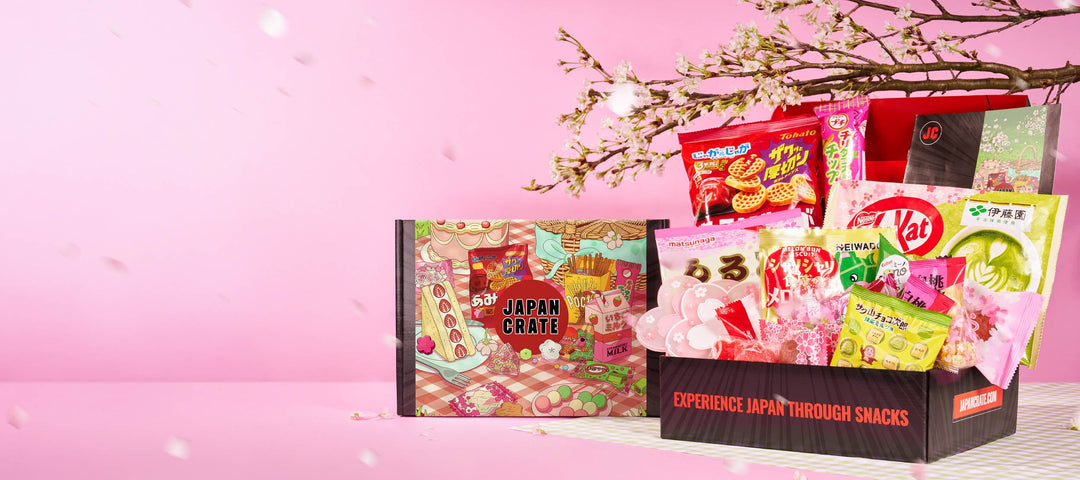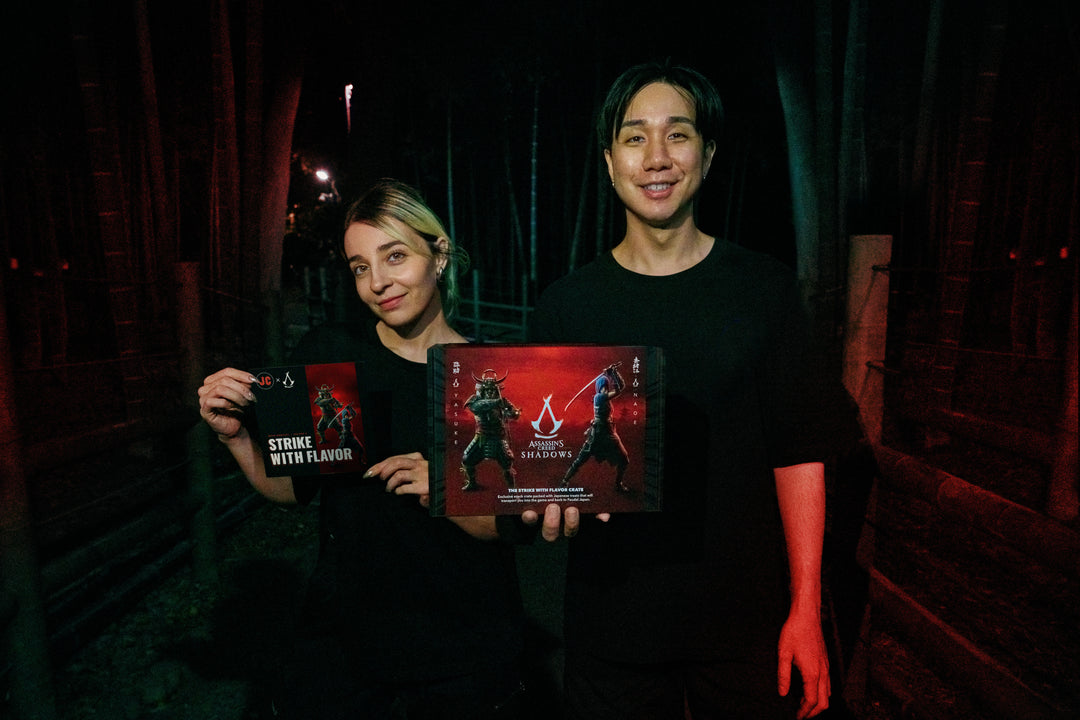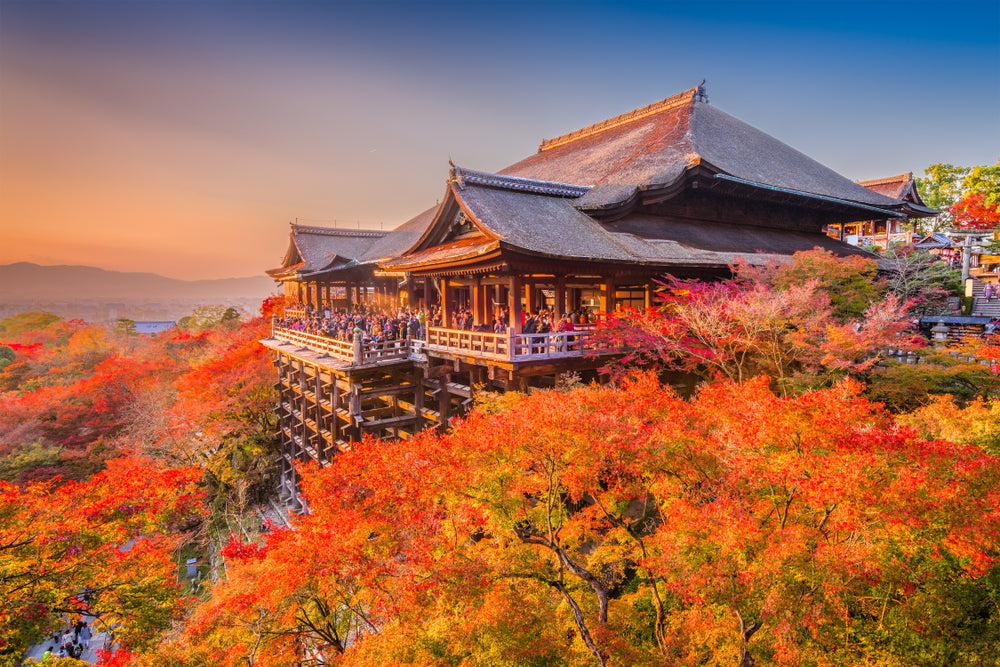Traditional Japanese Autumn Festivals and Their Associated Snacks
Autumn is perhaps the most vibrant of all four seasons in Japan. You get to enjoy beautiful autumn foliage, exciting festivals, and delicious seasonal snacks.
In this post, we’ll introduce you to the most popular autumn festivals in Japan and their associated snacks.

Introduction to Autumn Festivals in Japan
Autumn festivals are cultural celebrations that take place in Japan from mid-September to early December. These festivals are held by the dozens in different parts of the country, particularly in cultural and religious centers such as Tokyo, Osaka, and Kyoto.

Although every autumn event involves a unique set of customs and traditions, the majority of autumn festivals celebrate the harvest season, a period in which a variety of fruits and vegetables are ready for picking.
An autumn festival in Japan can feature religious prayer at the shrine, procession of floats, neighborhood parades, or even Halloween traditions. However, the most consistent practice at these events is the eating of seasonal snacks.
During the autumn season, people in Japan eat seasonal snacks like dango and rice cakes at home or on the festival grounds. The snacks can also serve as offerings at shrines and temples. Traditionally, they are made from seasonal autumn ingredients such as chestnut, apple, sweet potato, and persimmon.

Popular Autumn Festivals in Japan
Although there are dozens of autumn festivals in Japan, a handful of them are unmissable. Check them out!
Tsukimi (Moon Viewing)
Also known as Otsukimi, the term Tsukimi translates to “moon viewing.” It refers to the iconic Japanese autumn festival held in honor of the harvest moon. As a holiday, Tsukimi marks the end of the Japanese summer season.

The mid-autumn moon appears on day 15 of the eighth month of the ancient Japanese calendar. This day, also called Jūgoya, falls in a period from the middle of September to early October of the modern calendar.
The night of Jūgoya is graced with the appearance of a full moon known as the harvest moon and considered one of the most stunning sights in Japanese culture. The festival can last for several days. The 2025 iteration will take place from October 6 to October 9.
Tsukimi began in the Heian period (794-1185) as a variant of the Chinese Mid-Autumn festival. Today, it has evolved to feature many unique customs.
One of the biggest traditions is the gathering of families and friends to “view” the moon as a way to show gratitude for the season and pray for a bountiful harvest. People decorate their surroundings with susuki (Japanese pampas grass), a plant species that resembles rice stalks.
Also, certain tsukimi dishes from traditional Japanese cuisine take center stage during the festival. You can make them easily by placing raw egg toppings on Japanese dishes. Both tsukimi soba and tsukimi udon are famous seasonal foods and are made by topping noodles with raw quail egg.
Tsukimi Snacks
The following are the common seasonal snacks enjoyed during Tsukimi festivals.
-
Dango: This is the ultimate traditional food for tsukimi celebrations. Dango is a round-shaped rice dumpling made from glutinous rice flour and regular rice flour. Multiple pieces of the dango are attached to a skewer and topped with sweeteners (sugar, syrup, smooth red bean paste, etc.) or soy sauce. The variation of Dango eaten during moon-viewing festivals is called Tsukimi dango. It’s served plain and without the skewers. This variant is made to both represent and honor the full moo
 -
- -
Chestnut sweets: Chestnuts can be used to make a variety of snacks. They can simply be roasted and eaten as a crunchy fall treat. Chestnuts can also be peeled, blended, and cooked into soft and creamy puree, which is used in cakes, sauces, and soups. Other tsukimi desserts made with chestnuts are Mont Blanc, chestnut cream cake, and chestnut chocolate fondant.

Mochi: The Japanese rice cake made from glutinous rice, mochi, is often used as wagashi (traditional sweet) during cultural festivals, including tsukimi. This version, Tsukimi usagi mochi, is shaped and decorated to resemble a rabbit, in reference to the Japanese folklore about a rabbit pounding mochi on the moon.

Shichi-Go-San (Seven-Five-Three Festival)
The Shichi-Go-San is a Japanese fall festival dedicated to three categories of children: seven-year-old girls, three-year-old girls, and five-year-old boys. Sometimes, three-year-old boys are included in the celebrations.
The festival takes place on November 15 and is often a religious rite of passage for Japanese kids. On the day of the event, children in the right category are dressed in kimono and taken by their families to visit a Shinto shrine. At the shrine, their families pray for their good health and long life.
Since November 15 isn’t a national holiday in Japan, most families schedule the shrine visit for the nearest weekend when Shichi-Go-San falls on a work day.

Most historians believe that the festival originated in the Heian period as a way to celebrate the entry of children into mid-childhood. However, there are some who attribute its origins to the Muromachi period (1336–1573), an era when the idea could have developed from the high infant mortality rates. We can’t say for sure because a lot of the festival’s original traditions did not survive the Meiji era (1868–1922).
Why seven, five, and three specifically? Those numbers are odd numbers, and according to East Asian numerology, odd figures are considered lucky. It’s common practice to calculate the children’s age based on the kazoedoshi system (a year old at birth).
Dressing in kimono is a vital part of the Shichi-Go-San tradition, and some of the kids would be doing so for the first time. The three-year-old female children often wear a padded vest known as hifu as an accessory. There are cases in which the celebrants put on Western formal attire instead of kimonos. In the modern era, families gather to take photos of their children on this special day.
Traditional Shichi-Go-San Snacks
The following are common traditional snacks eaten at these events:
-
Chitose ame: This is the traditional Shichi-Go-San sweet. Also known as “one thousand year candy,” chitose ame serves as a symbol of long life and good health, making it the perfect treat for the occasion. Chitose ame is a red and white candy stick made from barley, glutinous rice, and water. The candy is often placed in a bag designed with imagery related to longevity, such as cranes, turtles, bamboo, plum flowers, and pine trees.
-
Osekihan: This is a famous East Asian rice dish made by cooking glutinous or sticky rice with red (azuki) beans. It’s often associated with Shinto rites.

- Kombumaki: This is especially famous in Hokkaido. Kombumaki is basically pieces of cooked pork or chicken and vegetables wrapped in seaweed. It’s often enjoyed at family gatherings.

Kiku Matsuri (Chrysanthemum Festival)
The Kiku Matsuri, or Chrysanthemum Festival, is a flower festival practiced all over Japan, particularly in Tokyo. This mid-November event features colorful displays of kiku (chrysanthemum flowers) in front of stalls, temples, shrines, palaces, government buildings, private homes, and even roads. The flowers bloom between mid-August and mid-January, and in autumn, they are virtually everywhere.

Chrysanthemum flowers were introduced to Japan from China many centuries ago. They quickly became popular among members of the royal family. Today, Japan has over 350 varieties of chrysanthemum.
During Kiku Matsuri, you will find different colors of chrysanthemum, ranging from yellow to pink. They are often grown and arranged in a specific fashion, thereby increasing their natural beauty.
Chrysanthemum-Flavored Treats
Some edible chrysanthemum flowers are used to make various sweets and snacks. Let’s explore the popular options in autumn:
-
Chrysanthemum-flavored cookies: The flowers from the plant can be combined with fruits like tangerine and used to make flavors for savory rice crackers
-
Chrysanthemum tea: They can be dried and infused into herbal tea.
-
Chrysanthemum-flavored candy: The flowers can be infused into hard candy to give it the taste and aroma of scented tea.
Japan Crate & Sugoi Mart Snacks
Thanks to Japan Crate, you can get access to authentic seasonal snacks from Japan. We send out a box filled with 15–17 Japanese sweets, cookies, and candies every other month. Subscribe today if you want to get our upcoming crates of autumn-themed snacks.
To give you an idea of what to expect, we’ve highlighted autumn-themed treats from past crates below.
Halloween Crate
The Halloween Crate was sent out to our subscribers in October 2023. It was a spooky-themed box with 16 different snacks and treats from Japan, including chocolate wafer cookies, peach squash, choco corn, cheddar cheese puffs, gummies, chocolate nuts, Pocky almond crush sticks, and caramel-flavored herbal tea.

The Year of the Dragon Crate
To celebrate the turn of the year, we launched the Year of the Dragon Crate in December 2024. The box featured seaweed-flavored potato chips from Calbee, DIY rice cakes, gummies (grape and orange flavors), taiyaki biscuits, Kit Kat Orange Chocolate, and Pretzs.
Some of the fall treats in our snack boxes are available for direct purchase on Sugoi Mart. You can satisfy your sweet tooth with Kit Kat Mont Blanc, a modern take on the iconic autumn dessert, and many other treats.

Author Bio







Leave a comment